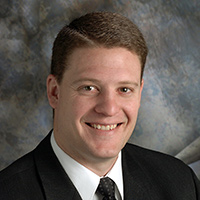Flying High By Managing Risk In Wealth Management
When it comes to both investing and flying a plane, you need to be prepared, use the proper tools and have a good wingman.

Managing wealth is like flying an airplane. In doing both, you'll face plenty of risk. The secret to both flying and investing is managing those risks.
The first step to managing risk is facing it. Plenty of people in their 20s and 30s who dream of learning to fly planes put those aspirations off for later. They have young children, new spouses, mortgages to pay, jobs to focus on and a myriad of other things to do. Well, the same holds true with investing. People in their 20s and 30s are vaguely aware they need to plan for retirement and start saving. However, other parts of life—children, mortgage payments, car loans, other bills—take over. As any investment adviser can tell you, too many people put off planning for their retirement until it's too late.
Similarly, almost every flight school instructor can tell you stories about people in their 40s, 50s and even seniors who regret that they didn't follow their hearts and take to the sky years ago. Most investment advisers can share stories about clients with similar regrets. Facing their upcoming retirements, these clients are kicking themselves that they didn't talk to an adviser or come up with a wealth management strategy years before.
From just $107.88 $24.99 for Kiplinger Personal Finance
Become a smarter, better informed investor. Subscribe from just $107.88 $24.99, plus get up to 4 Special Issues

Sign up for Kiplinger’s Free Newsletters
Profit and prosper with the best of expert advice on investing, taxes, retirement, personal finance and more - straight to your e-mail.
Profit and prosper with the best of expert advice - straight to your e-mail.
The next step to managing risk is preparing well. Pilots pre-flight checklists. Before they fire up the engines of their aircrafts, pilots rely on a process. They inspect their planes, both internally and externally. Pilots include everything from pre-flight checks to fastening their seatbelts on their checklists as they look to cut down on risk. Once in the air, pilots have different checklists to go through. This ensures that if things start to go wrong, pilots know what they have to do to ensure a happy landing.
Investors need to do the same thing. Of course, every investor has different needs. Some are more concerned with income. Other investors are focused on capital preservation or creating a legacy. No matter their needs, every investor—just like every pilot—should forge a checklist based on where they're at in life and what their investment needs are.
You also want to make sure you have the proper tools. Planes have control surfaces to let pilots adjust their flights and minimize the risk. These include flaps, rudders, ailerons and other parts of the plane. The pilot has control over all these various instruments, much like investors have some control of where they put their money including stocks, bonds and other options.
Communication is another key. Whether you're flying a plane or planning out your retirement, communicating with experienced individuals is important. Even on solo flights, no pilot is ever alone. Air traffic controllers are always there to help pilots. They play a large role in directing and helping pilots, making sure they stay on course and don't deviate from their flight plans. Even when things are clear, the best pilots always check in with air traffic controllers. Of course, when things go wrong, pilots turn to air traffic controllers for help.
Investors can think of financial advisers as their air traffic controllers since both groups have years of experience and training. Just as pilots don't want to face rough weather or other hazards without the help of air traffic controllers, investors should reach out to knowledgeable professionals when there'sturbulence in the market. It's my belief that experienced professionals—be they air traffic controllers with years of experience or seasoned financial advisers—are also far less likely than a rookie pilot or an inexperienced investor to panic when a crisis looms.
Knowledgeable individuals can also help pilots and investors with backup plans to help cut down on risk. Many small planes have parachute systems in case something goes wrong. Some planes have Ballistic Recovery System (BRS) parachute systems for when things go wrong. In layman's terms, when a crisis occurs, the pilot pulls the BRS handle and a rocket-powered parachute comes out of the rear window and floats down under the canopy. These kinds of precautions are always needed, even for the best pilots.
Investors can learn from that example. Just as pilots have to fly in all sorts of weather, investors encounter all sorts of climates in the market. They should consider meeting with an adviser to craft their fallback plan. You might even say an adviser can help lead investors to sunny skies or provide parachutes when needed.
Ryan Krauss is president and CEO of U.S. Central Financial Group. He is an Investment Adviser Representative with advisory services offered through Global Financial Private Capital and a licensed insurance professional. He and his wife, Erica, have two boys. Krauss is a U.S. instrument-rated pilot.
Investment Advisory Services offered through Global Financial Private Capital, LLC, an SEC Registered Investment Advisor. SEC registration does not imply any certain level of skill or training.
Kevin Derby contributed to this article.
Profit and prosper with the best of Kiplinger's advice on investing, taxes, retirement, personal finance and much more. Delivered daily. Enter your email in the box and click Sign Me Up.

Ryan Krauss is president and CEO of U.S. Central Financial Group. He has been in the insurance business for 17 years and added investment advisory services in 2013. Ryan believes in advising his clients the same way he would advise his own family, which creates lasting client relationships and many referrals.
-
 Don't Wait Until January: Your Year-End Health Checklist to Kickstart 2026
Don't Wait Until January: Your Year-End Health Checklist to Kickstart 2026Skip the fleeting resolutions and start the new year with a proactive plan to optimize your longevity, cognitive health, and social vitality.
-
 Premium Rewards Cards: More Perks, Higher Fees
Premium Rewards Cards: More Perks, Higher FeesSome issuers are hiking the annual fee on their flagship luxury credit cards by hundreds of dollars. Are they still worth using?
-
 3 Trips to Escape the Winter Doldrums, Including An Epic Cruise
3 Trips to Escape the Winter Doldrums, Including An Epic CruiseThree winter vacation ideas to suit different types of travelers.
-
 How to Master the Retirement Income Trinity: Cash Flow, Longevity Risk and Tax Efficiency
How to Master the Retirement Income Trinity: Cash Flow, Longevity Risk and Tax EfficiencyRetirement income planning is essential for your peace of mind — it can help you maintain your lifestyle and ease your worries that you'll run out of money.
-
 I'm an Insurance Expert: Sure, There's Always Tomorrow to Report Your Claim, But Procrastination Could Cost You
I'm an Insurance Expert: Sure, There's Always Tomorrow to Report Your Claim, But Procrastination Could Cost YouThe longer you wait to file an insurance claim, the bigger the problem could get — and the more leverage you're giving your insurer to deny it.
-
 Could a Cash Balance Plan Be Your Key to a Wealthy Retirement?
Could a Cash Balance Plan Be Your Key to a Wealthy Retirement?Cash balance plans have plenty of benefits for small-business owners. For starters, they can supercharge retirement savings and slash taxes. Should you opt in?
-
 7 Retirement Planning Trends in 2025: What They Mean for Your Wealth in 2026
7 Retirement Planning Trends in 2025: What They Mean for Your Wealth in 2026From government shutdowns to market swings, the past 12 months have been nothing if not eventful. The key trends can help you improve your own financial plan.
-
 What Defines Wealth: Soul or Silver? Good King Wenceslas' Enduring Legacy in the Snow
What Defines Wealth: Soul or Silver? Good King Wenceslas' Enduring Legacy in the SnowThe tale of Good King Wenceslas shows that true wealth is built through generosity, relationships and the courage to act kindly no matter what.
-
 An Investing Pro's 5 Moves to Help Ensure 2025's Banner Year in the Markets Continues to Work Hard for You in 2026
An Investing Pro's 5 Moves to Help Ensure 2025's Banner Year in the Markets Continues to Work Hard for You in 2026After a strong 2025 in the stock market, be strategic by rebalancing, re-investing with a clear purpose and keeping a disciplined focus on your long-term goals.
-
 Introducing Your CD's Edgier Cousin: The Market-Linked CD
Introducing Your CD's Edgier Cousin: The Market-Linked CDTraditional CDs are a safe option for savers, but they don't always beat inflation. Should you try their counterparts, market-linked CDs, for better returns?
-
 How to Protect Yourself and Others From a Troubled Adult Child: A Lesson from Real Life
How to Protect Yourself and Others From a Troubled Adult Child: A Lesson from Real LifeThis case of a violent adult son whose parents are in denial is an example of the extreme risks some parents face if they neglect essential safety precautions.